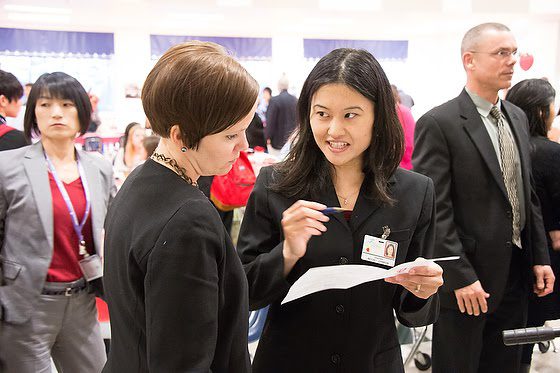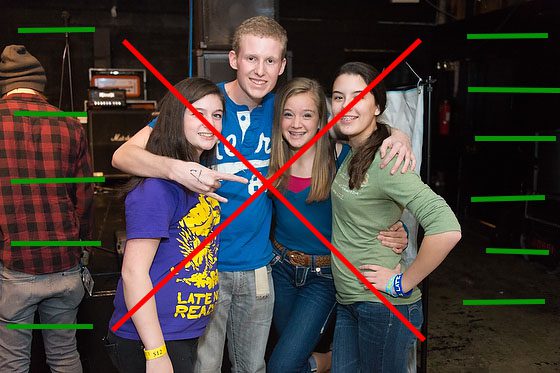 |
| Nikon D4, AF-S NIKKOR 28-300mm f/3.5-5.6G ED VR, ISO 8000, ƒ/4, 1/100 |
How would this photo look as a sentence?
asdfaggsgggTEENAGE GIRLS, YOUNG MANadsfgalgalcln
What is all that gibberish around the subjects in the photo?
All the area marked with green is that really needed? Did I compose the photo in such a way that it is a sentence rather than just a noun with gibberish around it?
Posed photos of people looking straight into the camera for the most part are not anything but a noun without a verb. Sure there are some exceptions, but many people use this same composition no matter what they are shooting. Just put the subject in the center and click.
 |
| Nikon D4, AF-S NIKKOR 28-300mm f/3.5-5.6G ED VR, ISO 12800, ƒ/5.6, 1/50 |
While here the people on the sides kind of balance the photo they really are more of a distraction than helping.
 |
| Nikon D4, Sigma 1.4X, Sigma 120-300 mm f/2.8 DG EX APO IF HSM, ISO 8000, ƒ/4.5, 1/2000 |
Here the edges cannot come in and crop much more without eliminating some of the sentence.
The ball is on the far right/top and the referees’ hand on the left and not to crop out the foot and show how the athlete is flying I kept it in at the bottom. Notice the wide receiver also has room to go once he catches the ball.
 |
| Nikon D4, AF-S NIKKOR 28-300mm f/3.5-5.6G ED VR, ISO 6400, ƒ/4, 1/60 |
While I could have moved the frame slightly to the right you can see here that I am using the bands name on banners to help compose the photo.
This helps to create leading lines as well and create depth into the photograph.
First and foremost eliminate anything you can from the frame that doesn’t help compliment the subject. Think of it like a sentence. Do you have a noun, verb and maybe some descriptors?
Second decide on where to place the subject into the frame.
Third is there a way to create depth into the photograph. This helps pull the audience into the photo.
These three things are just what you can do by moving your camera around in the subject and framing in a way to create impact and help the photo move from a noun with gibberish to a sentence.
Another thing that can greatly improve all photos is the lighting. Sometimes adding light to a situation can help guide the audience as well if not better than using leading lines and S-curves.
But before taking on lighting, always first learn to just compose using the frame of the camera.
How do you know if you are doing a good job of framing your subjects. While looking at your photos on your computer or even on the LCD look around the edges. Do you see things other than the subject that you don’t need? A good way to think of this while shooting is identify your subject and then look at everything but the subject in the frame–can it be eliminated or do I keep it?
 |
| Nikon D3S, AF-S NIKKOR 28-300mm f/3.5-5.6G ED VR, ISO 8000, ƒ/5 1/100 |
Remember to make the edges of the photo count as much as the subject you are focused on to make your photos stronger.
 |
| Nikon D2XS, Sigma 18-50mm ƒ/2.8, ISO 100, ƒ/5, 1/125 |
Take your time to compose. Once you have your composition then let the moment happen just like you do after you sit down to watch a play on broadway. The frame is the whole stage. Wait for the actors to move and hit those peak moments.
 |
| Fujifilm X-E2, FUJINON XF 55-200mm, ISO 6400, ƒ/4, 1/420 |




